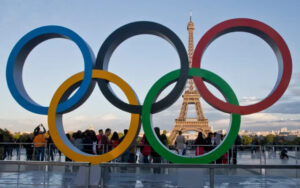
On a dusty field in Haryana, a boy throws a wooden stick like a javelin. On the banks of the Ganga in Uttar Pradesh, another boy swims against the strong river currents. In the green hills of the Northeast, a girl sprints uphill without any stopwatch. Under the harsh sun of Rajasthan, a young man lifts old truck tires to build strength or in a remote tribal village of Jharkhand, a young archer crafts her own arrows aiming for targets.
Unaware that their raw talent could shape them into future athletes, these young Indians go unnoticed. Their everyday struggles don’t make headlines but they define India’s Olympics spirit.
In India, the Olympic dream doesn’t just belong to stadiums, high performance centres or metropolitan sports institutions. It belongs to every village, every corner where children play without fear, where competition begins with sunrise and where every game is a small fight against limitations. If you look at India’s greatest Olympic stories, you’ll find something in common. Most of them began far from the spotlight.
The names we celebrate like Neeraj Chopra, Manu Bhaker, Deepika Kumari, Mirabai Chanu, Mary Kom, Bajrang Punia, Vijender Singh, Sakshi Malik all came from small villages.
Neeraj picked up a javelin in Khandra, a village in Panipat surrounded by farmland. Mirabai lifted her first weights in Nongpok Kakching, a remote village near Imphal. Wrestling champions like Sakshi and Bajrang trained in traditional akhadas in their villages while boxers like Mary Kom and Vijender honed their skills in some local arena.
These athletes did not rise because of privilege. They rose in spite of the lack of it. They were not discovered in elite schools or clubs. Their talents were shaped by daily hardship and relentless ambition. This is the very essence of the Olympic spirit to rise against odds and to never stop believing, no matter where you come from.
And that’s why we say there is something unique in the rural part of India that builds top notch athletes way before the formal training begins.
For More Exciting Articles: Follow RevSportz

Carrying firewood on hills, walking miles to reach school, working in fields, drawing water from wells, running barefoot behind cattle: these aren’t just daily routines but training grounds too. They’re early lessons of balance, stamina and strength.
Girls like the Phogat sisters trained on mud tracks in Balali, where there was no gym or mats, only hunger. Hima Das, the “Dhing Express”, began sprinting on rice fields during floods.
Yes, India’s Olympics ecosystem has evolved in the last two decades. Stages like Khelo India provide much needed exposure to show talent and schemes like TOPS (Target Olympics Podium Scheme) give athletes financial assistance. Private initiatives also added momentum.
Yet, even before these institutions arrived in the country, rural India had already produced champions. The only difference now is access and opportunity, but there are still hundreds of Neerajs, Mirabais and Deepikas waiting to be discovered. For that, the government needs to double down on rural scouting and grassroots support. Regular district level competitions, nutrition education, and access to basic sports infrastructure at the block level are much needed.
The Olympic dream lives in every Indian village because where there is struggle, there is strength and where there is strength, there is always a chance for glory. All we need to do is recognise them, support them and cheer them on. Because when a village athlete wins a medal it’s not a personal win but a collective celebration, which gives a ray of hope to thousands.
The Olympic rings don’t just belong only to elite centres. They also belong to every village square where kids run barefoot, to every dusty ground where dreams fly higher than kites. Because from every Indian village, the next Neeraj, the next Mary Kom can rise.
Also Read: India’s Olympic Movement – The past, present and future